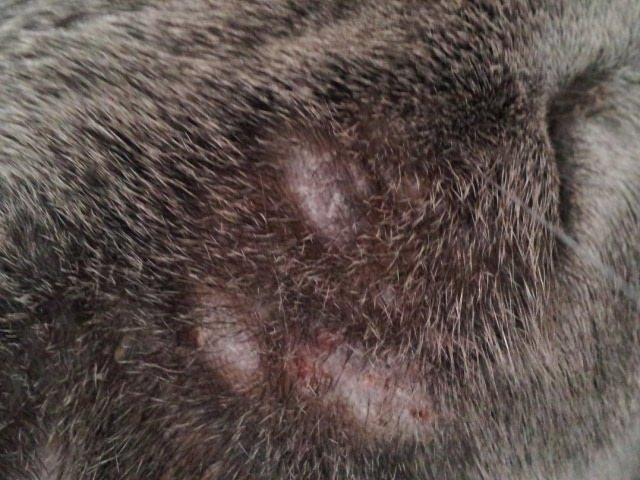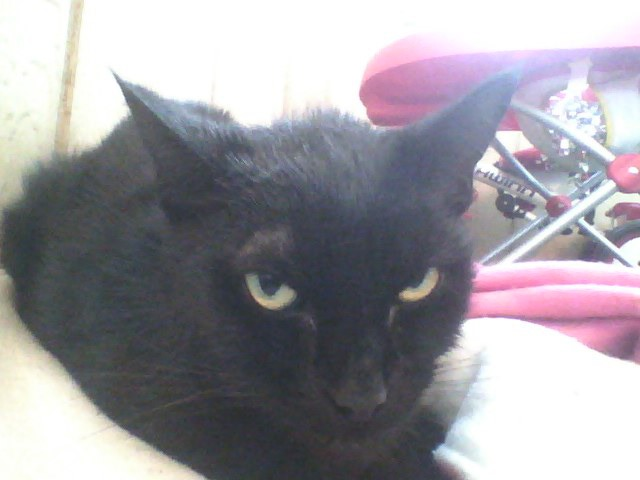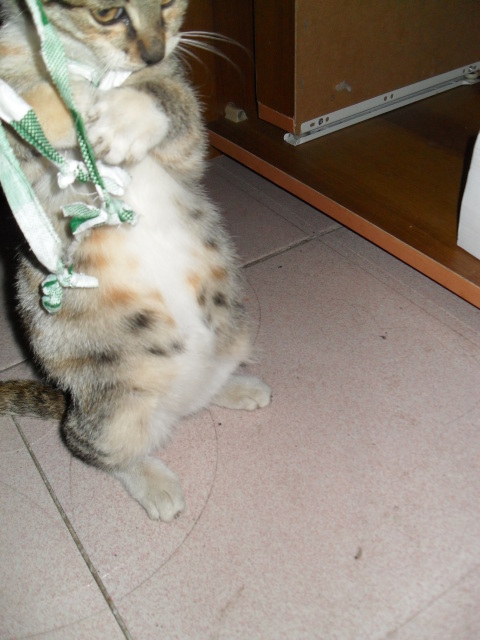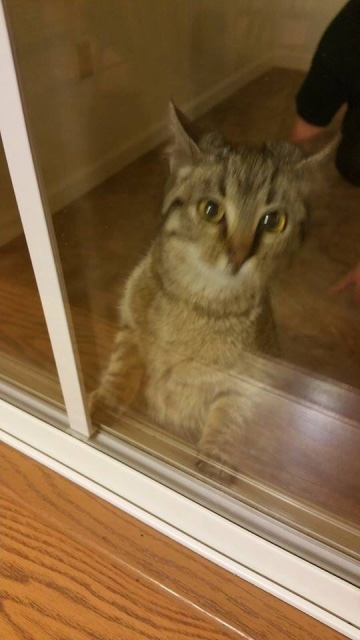QuestionWe just found 3 cats (mom - 1 1/2 yrs. and two kittens 5 mos. old) and took them in. The next day we took them to the vet and got there shots, dewormed and so on. The one kitten is much thinner then the other and seems to throw-up right after eating. It has a slight cough and puss on its eyes. The vet says it doesn't have the flu and should be fine. But she still throws up after eating. She is not gulping her food down and we don't notice any hair balls. She lays around alot but is willing to play with toys a little. Any comments are greatly welcome. Thank you in advance
AnswerHi Mark,
In getting vaccinated were the Mom and kittens tested for leukemia, FIV, FIP?
If they have it it could render the immune system of this little one weak and not able to fight off the simplest infections. It sounds like this kitty has an Upper Respiratory Infection (URI) from the coughing and runny eyes. The most common one they get is Rhinotracheitis. The Mom and other kitten might have fought it off.
But the vomiting after eating is worrisome to me. If she was mostly nursing on her mom and not eating solids but is now eating them and vomiting I am worried she might have a very rare condition where there is a vessel that impinges on the esophagus and makes it hard for them to eat solids. It comes from the heart and in 30 years I have seen it once. It can cause a condition called mega-esophagus where there is an enlargement in the esophagus above the stricture caused by the vessel around the trachea and esophagus.
Persistent Right Aortic Arch (PRAA) in Dogs (applies to cats also)
http://www.peteducation.com/article.cfm?cls=2&cat=1610&articleid=870
In the fetus there are blood vessels that at first may serve a function, but then naturally deteriorate as the embryo grows. Occasionally, vessels in the chest cavity, called the aortic arches, will fail to disappear. The right aortic arch passes near the esophagus. If this blood vessel persists in the newborn, the esophagus is trapped between it and the heart. This inhibits the growth and function of the esophagus, thus restricting food passage to the stomach.
What are the symptoms?
Usually, symptoms appear before six months of age and include stunted growth and regurgitation immediately after eating. The affected puppy may also experience difficulty breathing if regurgitated food is aspirated, or if the trachea is also restricted.
What are the risks?
Without treatment, growth will be severely stunted, as the puppy will be unable to digest adequate amounts of food. Severe respiratory distress such as pneumonia may also develop.
What is the management?
Surgical removal of the stricture (narrowing) caused by the persistent right aortic arch is the preferred treatment. It is important to perform surgery early in the disease, before permanent growth damage has occurred.
Many affected puppies will not grow at a normal rate and will be smaller than their littermates.
The only way to correctly identify this is with barium xrays or an ultrasound.
Of course it could be just that this kitten isn't tolerating the food well either and it is irritating the esophagus or stomach causing vomiting.
The best way to tell it to put it on some canned food for a few days to
see if it can swallow that or a bland diet (boiled rice and ground turkey) in several small meals a day to see if it a food intolerance.
You should look this up and ask your veterinarian about it.
I hope this isn't the case, (the PRAA) but it bears some investigation.
Please let me know how she does and what you find out.

 Skin lesions/sores on cat
Question
Jacks belly
My daughters cat, Jack is aprox 3
Skin lesions/sores on cat
Question
Jacks belly
My daughters cat, Jack is aprox 3
 Cats play fighting
Question
Brunos scratches Brunos scratches
Cats play fighting
Question
Brunos scratches Brunos scratches
 please help my cat
Questionmy cat cutie
QUESTION: hello,
my cat has
please help my cat
Questionmy cat cutie
QUESTION: hello,
my cat has
 Feral cat with bloated stomach
Question
Cats stomach
Hello,
Id like some help with a
Feral cat with bloated stomach
Question
Cats stomach
Hello,
Id like some help with a
 Cat breed, safe for family?
Question
The kitten
I found a kitten a couple da
Cat breed, safe for family?
Question
The kitten
I found a kitten a couple da